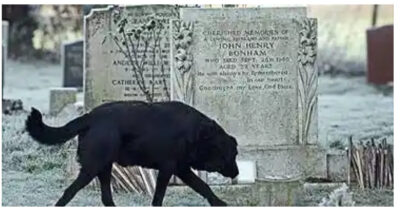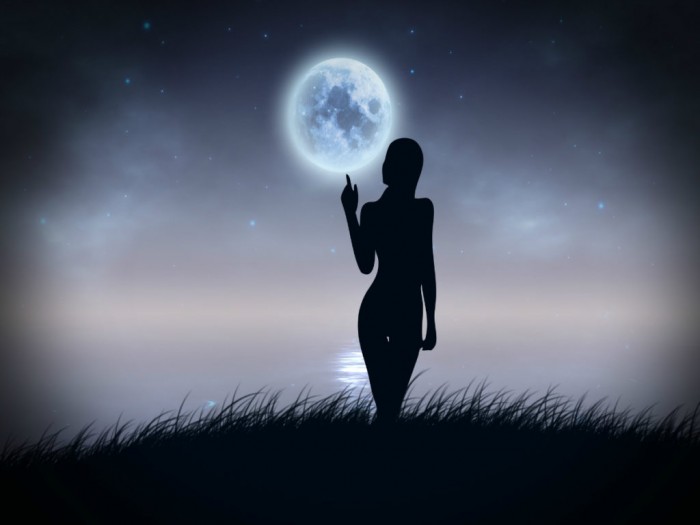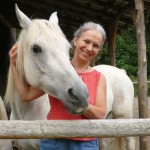 In the summer of 2021, I experienced a cluster of coincidences, some of which had a distinctly supernatural feel. Here’s how it started. I keep a journal and record dreams if they are especially vivid or strange. It doesn’t happen often, but I logged one in which my mother’s oldest friend, a woman called Rose, made an appearance to tell me that she (Rose) had just died. She’d had another stroke, she said, and that was it. Come the morning, it occurred to me that I didn’t know whether Rose was still alive. I guessed not. She’d had a major stroke about 10 years ago and had gone on to suffer a series of minor strokes, descending into a sorry state of physical incapacity and dementia.
In the summer of 2021, I experienced a cluster of coincidences, some of which had a distinctly supernatural feel. Here’s how it started. I keep a journal and record dreams if they are especially vivid or strange. It doesn’t happen often, but I logged one in which my mother’s oldest friend, a woman called Rose, made an appearance to tell me that she (Rose) had just died. She’d had another stroke, she said, and that was it. Come the morning, it occurred to me that I didn’t know whether Rose was still alive. I guessed not. She’d had a major stroke about 10 years ago and had gone on to suffer a series of minor strokes, descending into a sorry state of physical incapacity and dementia.
I mentioned the dream to my partner over breakfast, but she wasn’t much interested. We were staying in the Midlands at the time in the house where I’d spent my later childhood years. The place had been unoccupied for months. My father, Mal, was long gone, and my mother, Doreen, was in a care home drifting inexorably through the advanced stages of Alzheimer’s. We’d just sold the property we’d been living in, and there would be a few weeks’ delay in getting access to our future home, so the old house was a convenient place to stay in the meantime.
I gave no further thought to my strange dream until, a fortnight later, we returned from the supermarket to find that a note had been pushed through the letterbox. It was addressed to my mother, and was from Rose’s daughter, Maggie. Her mother, she wrote, had died ‘two weeks ago’. The funeral would be the following week. I handed the note to my partner and reminded her of my dream. ‘Weird,’ she said, and carried on unloading the groceries. Yes, weird. I can’t recall the last time Rose had entered my thoughts, and there she was, turning up in a dream with news of her own death.
So, what am I to make of this? Here’s one interpretation. Rose died, and her disembodied spirit felt the need to tell me and found its way into my dream. Perhaps she had first tried to contact Doreen, but for one reason or another – the impenetrable wreckage of a damaged brain? – couldn’t get through. Here’s another interpretation. The whole chain of events occurred by sheer coincidence, a chance concatenation of happenings with no deeper significance. There’s nothing at all supernatural about it.
If you ask me which of those two interpretations I prefer, it would, unequivocally, be the second. But here’s the thing. There is a part of me that, despite myself, wants to entertain the possibility that the world really does have supernatural dimensions. It’s the same part of me that gets spooked by ghost stories, and that would feel uneasy about spending a night alone in a morgue. I don’t believe the Universe contains supernatural forces, but I feel it might. This is because the human mind has fundamentally irrational elements. I’d go as far as to say that magical thinking forms the basis of selfhood. Our experience of ourselves and other people is essentially an act of imagination that can’t be sustained through wholly rational modes of thought. We see the light of consciousness in another’s eyes and, irresistibly, imagine some ethereal self behind those eyes, humming with feelings and thoughts, when in fact there’s nothing but the dark and silent substance of the brain. We imagine something similar behind our own eyes. It’s a necessary illusion, rooted deep in our evolutionary history. Coincidence, or rather the experience of coincidence, triggers magical thoughts that are equally deep-rooted.
The term ‘coincidence’ covers a wide range of phenomena, from the cosmic (in a total solar eclipse, the disk of the Moon and the disk of the Sun by sheer chance appear to have precisely the same diameter) to the personal and parochial (my granddaughter has the same birthday as my late wife). On the human, experiential, scale, a broad distinction can be drawn between serendipity – timely, but unplanned, discoveries or development of events – and what the 20th-century Lamarckian biologist and coincidence collector Paul Kammerer called seriality, which he defined as ‘a lawful recurrence of the same or similar things or events … in time and space’.
The biography of the actor Anthony Hopkins contains a striking example of a serendipitous coincidence. On first hearing he’d been cast to play a part in the film The Girl from Petrovka (1974), Hopkins went in search of a copy of the book on which it was based, a novel by George Feifer. He combed the bookshops of London in vain and, somewhat dejected, gave up and headed home. Then, to his amazement, he spotted a copy of The Girl from Petrovka lying on a bench at Leicester Square station. He recounted the story to Feifer when they met on location, and it transpired that the book Hopkins had stumbled upon was the very one that the author had mislaid in another part of London – an advance copy full of red-ink amendments and marginal notes he’d made in preparation for a US edition.
Hollywood provides another choice example of seriality. L Frank Baum was a prolific children’s author, best-known for The Wonderful Wizard of Oz (1900). He didn’t live to see his novel turned into the iconic musical fantasy film, yet he reputedly had a remarkable coincidental connection with the movie. The actor Frank Morgan played five roles in The Wizard of Oz (1939), including the eponymous Wizard. He makes his first appearance in the sepia-toned opening sequences as Professor Marvel, a travelling fortune-teller. Movie lore says that, when it came to screen testing, the coat he was wearing was considered too pristine for an itinerant magician. So the wardrobe department was sent on a thrift-shop mission to find something more suitable, and returned with a whole closetful of possibilities. The one they settled on, a Prince Albert frock coat with worn velvet collars, was a perfect fit for the actor. Only later was it apparently discovered that, sewn into the jacket was a label bearing the inscription: ‘Made by Hermann Bros, expressly for L Frank Baum’. Baum had died some 20 years before the film was released but the coat’s provenance was allegedly authenticated by his widow, Maud, who accepted it as a gift when the film was completed.
Some coincidences seem to contain an element of humour as if engineered by a capricious spirit purely for its own amusement. Not long after first moving to Bath in 2016, I made a dash across the busy London Road, misjudged the height of the kerb on the other side, tripped, fell awkwardly, and fractured my right arm. Over the next five years, I lived variously in Bath, rural Worcestershire and London. Soon after moving back to Bath on a more permanent basis, I noticed a stylish mahogany chair in the window of a charity shop on London Road, went straight in and bought it. I thought I’d have no trouble lugging the chair back to my flat half a mile away, but it turned out to be heavier than I expected and awkward to carry. As I was crossing the road where I’d had my fall five years previously, the chair slipped my grip, crashed to the ground and splintered its right arm. Hear the chuckles of the coincidence imp.
 While some coincidences seem playful, others feel inherently macabre. In 2007, the Guardian journalist John Harris set out on ‘an intermittent rock-grave odyssey’ visiting the last resting places of revered UK rock musicians. About halfway through, he went to the tiny village of Rushock in Worcestershire to gather thoughts at the headstone of the Led Zeppelin drummer John Bonham, who died at the age of 32 on 25 September 1980, after consuming a prodigious quantity of alcohol. A Guardian photographer had visited the grave a few days earlier to get a picture to accompany the piece. It was, writes Harris, ‘an icy morning that gave the churchyard the look of a scene from The Omen’ and, fitting with one of the key motifs of that film, the photographer was ‘spooked by the appearance of an unaccompanied black dog, which urinates on the gravestone and then disappears’. ‘Black Dog’ (1971) happens to be the title of one of the most iconic songs in the Led Zeppelin catalogue.
While some coincidences seem playful, others feel inherently macabre. In 2007, the Guardian journalist John Harris set out on ‘an intermittent rock-grave odyssey’ visiting the last resting places of revered UK rock musicians. About halfway through, he went to the tiny village of Rushock in Worcestershire to gather thoughts at the headstone of the Led Zeppelin drummer John Bonham, who died at the age of 32 on 25 September 1980, after consuming a prodigious quantity of alcohol. A Guardian photographer had visited the grave a few days earlier to get a picture to accompany the piece. It was, writes Harris, ‘an icy morning that gave the churchyard the look of a scene from The Omen’ and, fitting with one of the key motifs of that film, the photographer was ‘spooked by the appearance of an unaccompanied black dog, which urinates on the gravestone and then disappears’. ‘Black Dog’ (1971) happens to be the title of one of the most iconic songs in the Led Zeppelin catalogue.
If we picture a continuum of coincidences from the trivial to the extraordinary, both the Hopkins and the Baum examples would surely be located towards the strange and unusual end. My ‘broken arms’ coincidence tends towards the trivial. Other, still more mundane examples are commonplace. You get chatting to a stranger on a train and discover you have an acquaintance in common. You’re thinking of someone and, in the next breath they call you. You read an unusual word in a magazine and, simultaneously, someone on the radio utters the same word. Such occurrences might elicit a wry smile, but the weirder ones can induce a strong sense of the uncanny. The world momentarily seems full of strange connections and forces.
It’s a state of mind resembling apophenia – a tendency to perceive meaningful, and usually sinister, links between unrelated events – which is a common prelude to the emergence of psychotic delusions. Individual differences may play a part in the experience of such coincidences. Schizotypy is a dimension of personality characterised by experiences that in some ways echo, in muted form, the symptoms of psychosis, including magical ideation and paranormal belief. There is evidence to suggest that, within the general population, people who score high on measures of schizotypy may also be more prone to experiencing meaningful coincidences and magical thinking. Perhaps schizotypal individuals are also more powerfully affected by coincidence. Someone scoring high on measures of schizotypy would perhaps be more spooked by a death dream than I (a low scorer) was.
I have set naturalism and the supernatural in binary opposition but perhaps there is a third way. Let’s call it the supranatural stance. This was the position adopted, in different ways, by Kammerer and by the Swiss psychologist Carl Jung. Koestler’s The Roots of Coincidence (1972) introduced Kammerer’s work to the English-speaking world and was influential in reviving interest in Jung’s ideas. Kammerer began recording coincidences in 1900, most of them mind-numbingly trivial. For example, he notes that, on 4 November 1910, his brother-in-law attended a concert, and number 9 was both his seat number and the number of his cloakroom ticket. The following day he went to another concert, and his seat and cloakroom ticket numbers were both 21.
Kammerer’s book Das Gesetz der Serie (1919), or ‘The Law of Seriality’, contains 100 samples of coincidences that he classifies in terms of typology, morphology, power and so on, with, as Koestler puts it, ‘the meticulousness of a zoologist devoted to taxonomy’. The second half of the book is devoted to theory. Kammerer’s big idea is that, alongside causality, there is an acausal principle at work in the Universe, somewhat analogous to gravity but, whereas gravity acts universally on mass, this universal acausal force, as Koestler puts it, ‘acts selectively on form and function to bring similar configurations together in space and time; it correlates by affinity.’ Kammerer sums things up as follows: ‘We thus arrive at the image of a world-mosaic or cosmic kaleidoscope, which, in spite of constant shufflings and rearrangements, also takes care of bringing like and like together.’ This seems far-fetched but Albert Einstein, for one, took Kammerer seriously, describing his book as ‘original and by no means absurd’.
The theory of synchronicity, or meaningful coincidence, proposed by Jung follows a similar line. It took shape over several decades through a confluence of ideas streaming in from philosophy, physics, the occult and, not least, from the wellsprings of magical thinking that bubbled in the depths of Jung’s own prodigiously creative and, at times, near-psychotic mind. Certain coincidences, he suggests, are not merely a random coming-together of unrelated events, nor are the events causally linked. They are connected acausally by virtue of their meaning. Synchronicity was the ‘acausal connecting principle’.
According to the physicist and historian of science Arthur I Miller’s book Deciphering the Cosmic Number: The Strange Friendship of Wolfgang Pauli and Carl Jung (2009), Jung considered this to be one of the best ideas he ever had, and cites Einstein as an influence. In the early years of the 20th century, Einstein was on several occasions a dinner guest at the Jung family home in Zurich, making a strong impression. Jung traces a direct link between those dinners with Einstein and his dialogue, some 30 years later, with the Nobel prize-winning physicist Wolfgang Pauli, a dialogue that brought the concept of synchronicity to fruition.
Jung’s collaboration with Pauli was an unlikely coalition: Jung, the quasi-mystic psychologist, a psychonaut whose deep excursions into his own unconscious mind he deemed the most significant experiences of his life; and Pauli, the hardcore theoretical physicist who was influential in reshaping our understanding of the physical world at its subatomic foundations. Following his mother’s suicide and a brief, unhappy marriage to a cabaret dancer who left him for a chemist (‘Had she taken with a bullfighter, I would have understood, but such an ordinary chemist…’), Pauli suffered a psychological crisis. Even as he was producing his most important work in physics (formulating the ‘Pauli exclusion principle’; postulating the existence of the neutrino), he was succumbing to bouts of heavy drinking and getting into fights.
Pauli turned for help to Jung who happened to live nearby. His therapy involved the recording of dreams, a task at which he proved himself to be remarkably adept, being able to remember complex dreams in exquisite detail. For his part, Jung saw an opportunity. Not only was Pauli an extraordinary chronicler of dreams, but he was also a willing guide to the arcane realm of subatomic physics. Meanwhile, Pauli saw synchronicity as a way of approaching some fundamental questions in quantum mechanics, not least the mystery of quantum entanglement, by which sub-atomic particles may correlate instantaneously, and acausally, at any distance. From their discussions of synchronicity emerged the Pauli-Jung conjecture, a form of double-aspect theory of mind and matter, which viewed the mental and the physical as different aspects of a deeper underlying reality.
 Jung was the first to bring coincidences into the frame of psychological enquiry, and made use of them in his analytic practice. He offers an anecdote about a golden beetle as an illustration of synchronicity at work in the clinic. A young woman is recounting a dream in which she was given a golden scarab, when Jung hears a gentle tapping at the window behind him and turns to see a flying insect knocking against the windowpane. He opens the window and catches the creature as it flies into the room. It turns out to be a rose chafer beetle, ‘the nearest analogy to a golden scarab that one finds in our latitudes’. The incident proved to be a transformative moment in the woman’s therapy. She had, says Jung, been ‘an extraordinarily difficult case’ on account of her hyper-rationality and, evidently, ‘something quite irrational was needed’ to break her defences. The coincidence of the dream and the insect’s intrusion was the key to therapeutic progress. Jung adds that the scarab is ‘a classic example of a rebirth symbol’ with roots in Egyptian mythology.
Jung was the first to bring coincidences into the frame of psychological enquiry, and made use of them in his analytic practice. He offers an anecdote about a golden beetle as an illustration of synchronicity at work in the clinic. A young woman is recounting a dream in which she was given a golden scarab, when Jung hears a gentle tapping at the window behind him and turns to see a flying insect knocking against the windowpane. He opens the window and catches the creature as it flies into the room. It turns out to be a rose chafer beetle, ‘the nearest analogy to a golden scarab that one finds in our latitudes’. The incident proved to be a transformative moment in the woman’s therapy. She had, says Jung, been ‘an extraordinarily difficult case’ on account of her hyper-rationality and, evidently, ‘something quite irrational was needed’ to break her defences. The coincidence of the dream and the insect’s intrusion was the key to therapeutic progress. Jung adds that the scarab is ‘a classic example of a rebirth symbol’ with roots in Egyptian mythology.
Whereas Kammerer hypothesised impersonal, acausal factors intersecting with the causal nexus of the Universe, Jung’s acausal connecting principle was enmeshed with the psyche, specifically with the archetypes of the collective unconscious. In Jung’s wider theorising, these archetypes are primordial structures of the mind common to all human beings. Resurrecting an ancient term, Jung envisioned an unus mundus, a unitary or one world, in which the mental and physical are integrated, and where the archetypes are instrumental in shaping both mind and matter. It’s a bold vision but where, we are bound to ask, is the evidence for any of this? Beyond anecdote, there is none. Pauli saw archetypal influence in the scientific theories of Johannes Kepler, the father of modern astronomy and, as the evolutionary psychiatrist Anthony Stevens argues in Private Myths (1995), a case can be made for grounding archetypes biologically by analogy with the innate releasing mechanisms identified by ethologists. If so, there is more than a grain of plausibility in the suggestion that archetypal structures have an influence in shaping thought and behaviour. But the entire Universe? Pauli aside, the idea of synchronicity received little support from the wider scientific community.
Contemporary cognitive science offers a more secure, if less colourful, conceptual framework for making sense of the experience of coincidence. We are predisposed to encounter coincidences because their detection, it might be said, reflects the basic modus operandi of our cognitive and perceptual systems. The brain seeks patterns in the flow of sensory data it receives from the world. It infuses the patterns it detects with meaning and sometimes agency (often misplaced) and, as a part of this process, it forms beliefs and expectations that serve to shape future perceptions and behaviour. Coincidence, in the simple sense of co-occurrence, informs pattern-detection, especially in terms of identifying causal relationships, and so enhances predictability. The ‘world’ does not simply present itself through the windowpanes of the eyes and channels of the other senses. The brain’s perceptual systems are proactive. They construct a model of the world by continually attempting to match incoming, ‘bottom-up’ sensory data with ‘top-down’ anticipations and predictions. Raw sensory data serve to refine the brain’s best guesses as to what’s happening, rather than building the world afresh with each passing moment. The brain, simply put, is constantly on the lookout for coincidence.
From a wide-ranging survey of psychological and neurocognitive research, Michiel van Elk, Karl Friston and Harold Bekkering conclude that the overgeneralisation of such predictive models plays a crucial part in the experience of coincidence. Primed by deeply ingrained cognitive biases (self-attributional, confirmational, attentional, and so forth) and ill-equipped to make accurate estimates of chance and probability, we are innately inclined to see (and feel) patterns and connections where they simply don’t exist. ‘Innately inclined’ because, in evolutionary terms, the tendency to over-detect coincidences is adaptive. Failure to detect contingencies between related events – for example, rustling in the undergrowth/proximity of a predator – is generally more costly than an erroneous inference of a relationship between unrelated events. Another driver of coincidence is what the linguist Arnold Zwicky calls the ‘frequency illusion’, a term originating in a blog post but that has since found its way into the Oxford English Dictionary:
frequency illusion n. a quirk of perception whereby a phenomenon to which one is newly alert suddenly seems ubiquitous.
You might encounter a word for the first time, and then read or hear it later the same day. Or, you drive a different car for the first time, and suddenly the same make and model seems to be all over the place. This is due to a combination of two well-understood psychological processes: selective attention (homing in on salient objects and events); and confirmation bias (seeking out objects and events that support our beliefs and perceptions, while ignoring evidence to the contrary).
Van Elk and colleagues were not the first to signal the unreliability of intuitive judgments of probability as a factor in the perception of coincidence. Various authors before them – eg, Stuart Sutherland in his book Irrationality (1992) – have suggested that paranormal beliefs, including the belief that some coincidences are supernatural, arise because of failures of intuitive probability. The so-called birthday problem or paradox, a staple of introductory classes in probability theory, reliably exposes the flaws of our intuitions. It asks what is the likelihood that two people will share a birthday in randomly selected groups. Most people are surprised to learn that a gathering of only 23 people is required for the chances of two of them sharing a birthday to exceed 50 per cent. I’d been meaning for some time to try a simple empirical exercise involving ‘deathdays’ to mirror the birthday problem (an idea inspired by a conversation with the psychologist Nicholas Humphrey). Since I found myself once more staying briefly at my parents’ old house, a short drive from Rushock, I decided I would pay a visit to St Michael and All Angels’ churchyard and use the Led Zeppelin drummer’s grave as the starting point for my research, for no reason other than the vague pull of that black dog story.
Bonham’s headstone is easy to locate on the north side of the church, festooned as it is with drumsticks and cymbals left as offerings by the many pilgrims who make their way to the shrine from around the world. The grave lies in the shade of a spreading, blue-needled conifer and, to the right, there’s a row of three other graves. So just four graves in total (there is also a small, sandcastle-like monument at the base of the tree trunk, which I discounted for lack of name and dates). The plan was to conduct a self-terminating search. Starting with Bonham’s headstone, and with my notebook in hand, I would inspect the other graves in the row and then the rows behind and in front, working my way methodically around the graveyard, until I found any two matching dates of death, but my mission ended almost as soon as it had begun. I needed to go no further than the four graves (with five occupants) in Bonham’s row. The occupants of the two on the right shared 29 September as their date of death (21 years apart). I wish I could report that the mysterious black dog made an appearance, but it didn’t.
Turning to the probability of dream coincidences, suppose for the sake of argument that the probability of a dream coincidentally matching real-world events is 1-in-10,000, and that only one dream per night is remembered. The probability of a ‘matching’ dream on any given night is 0.0001 (ie, 1-in-10,000), meaning that the probability of a ‘non-matching’ dream is 0.9999. The probability of two consecutive nights with non-matching dreams is 0.9999 x 0.9999. The probability of having non-matching dreams every night for a whole year is 0.9999 multiplied by itself 365 times, which is 0.9642. Rounding up, this means that there is a 3.6 per cent chance of any given person having a dream that matches or ‘predicts’ real-world events over the course of a year. Over a period of 20 years, the odds of having a matching/precognitive dream would be greater than even.
Rose, the woman in the death dream I experienced, was 90 years old, and the chances of a 90-year-old woman in the UK dying before her 91st birthday are around 1-in-6, which is to say, not unlikely. Given her medical history, the likelihood that Rose would die before her 91st birthday was probably much greater than that. But why should I dream about her in the first place? It’s true, I hadn’t been consciously thinking about Rose but, staying in my childhood home, there would have been many implicit reminders. She used to live close by and came to our house often. Also, visiting my ailing mother more often than usual at her care home would have me thinking about death at both conscious and unconscious levels, and perhaps (unconsciously) about her friendship with Rose.
Attempts at understanding coincidence thus range from extravagant conjectures conceiving of acausal forces influencing the fundamental workings of the Universe, to sober cognitive studies deconstructing the basic mechanisms of the mind. But there is something else to consider. Remarkable coincidences happen because, well, they happen, and they happen without inherent meaning and independently of the workings of the pattern-hungry brain. As the statistician David Hand puts it, ‘extremely improbable events are commonplace’. He refers to this as the improbability principle, one with different statistical strands, including the law of truly large numbers, which states that, ‘with a large enough number of opportunities, any outrageous thing is likely to happen.’ Every week, there are many lottery jackpot winners around the globe, each with odds of winning at many millions-to-one against. And, in defiance of truly phenomenal odds, several people have won national and state lottery jackpots on more than one occasion.
I am a naturalist, but coincidences give me a glimpse of what the supernaturalist sees, and my worldview is briefly challenged. Soon, though, for good or ill, I am back on my usual track. One final coincidence story from my personal archive illustrates this point. It concerns a meta-coincidence, that is, a coincidence about a coincidence. It was a warm afternoon in mid-June, and I was feeling sorry for myself. My partner had walked out on me just the week before, and I thought a good way to deal with self-pity would be to launch into a new project. I would do some research into the psychology of coincidence. So, there I was, settled in an armchair surrounded by books and articles on the subject, including Koestler’s The Roots of Coincidence. Among other things, I’d been reading his account of Jung’s golden scarab story.
In need of coffee, I set Koestler aside and went to the kitchen, returning to find, set squat on the back of my armchair, a golden beetle, a rose chafer like the one that had made its way through the window of Jung’s consulting room. It must have flown in through the wide-open balcony door. I quickly took a picture in case the insect took flight again, and then nudged it onto my palm to return it to the wild, but it simply rolled onto its back and lay motionless. Dead.
I sent the picture to my ex, and asked how she was doing. She didn’t reply, but later that evening called with unsettling news. Zoe, an acquaintance of ours, had that afternoon hanged herself from a tree in her ex-partner’s garden. My brain by now was in magical thinking mode, and I said I couldn’t help but link Zoe’s death to the appearance, and death, of the golden beetle. I didn’t believe there was a link, of course, but I felt there might be. Believing and feeling. There was something else at the back of my mind. In Greek mythology, all that king Midas touched turned to gold. His daughter’s name was Zoe, and she too was turned to gold.
Ah, but rose chafers are quite common in the south of England; they are active in warm weather; the balcony opens out on a water meadow (a typical rose chafer habitat); et cetera. And it has since been suggested to me that the beetle was quite likely ‘playing dead’ rather than truly dead. Perhaps, after I’d thrown it back out onto the meadow, there was a ‘rebirth’ of the kind these creatures are said to symbolise.
Weird, though.
Original article here





